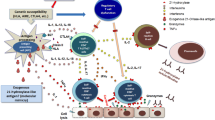Abstract
Cerebrotendineous xanthomatosis (CTX) is an autosomal recessive disorder of bile acids synthesis. Patients may present with a variety of clinical manifestations: bilateral cataract and chronic diarrhea during childhood, then occurrence of neurological debilitating symptoms in adulthood (cognitive decline, motor disorders). Plasma cholestanol is used as a diagnostic marker of CTX, and to monitor the response to the treatment. Current treatment for CTX is chenodeoxycholic acid (CDCA), which was reported to improve and/or stabilize clinical status and decrease levels of plasma cholestanol. Rare published reports have also suggested a potential efficacy of cholic acid (CA) in patients with CTX. In this retrospective Franco-Belgian multicentric study, we collected data from 12 patients treated with CA, evaluating their clinical status, cholestanol levels and adverse effects during the treatment period. The population was divided in two subgroups: treatment-naive (who never had CDCA prior to CA) and non-treatment-naive patients (who had CDCA prior to CA introduction). We found that treatment with CA significantly and strongly reduced cholestanol levels in all patients. Additionally, 10 out of 12 patients clinically improved or stabilized with CA treatment. Worsening was noted in one treatment-naïve patient and one non-treatment-naïve patient, but both patients experienced similar outcomes with CDCA treatment as well. No adverse effects were reported from patients with CA treatment, whereas elevated transaminases were observed in some patients while they were treated with CDCA. In conclusion, these findings suggest that CA may be a suitable alternative treatment for CTX, especially in patients with side effects related to CDCA.



Similar content being viewed by others
References
Appadurai V et al (2015) Apparent underdiagnosis of cerebrotendinous xanthomatosis revealed by analysis of ~ 60, 000 human exomes. Mol Genet Metab 116(4):298–304
Salen G, Steiner RD (2017) Epidemiology, diagnosis, and treatment of cerebrotendinous xanthomatosis (CTX). J Inherit Metab Dis 40(6):771–781
Degos B et al (2016) Natural history of cerebrotendinous xanthomatosis: a paediatric disease diagnosed in adulthood. Orphanet J Rare Dis 11(1):41
Berginer VM, Salen G, Shefer S (1984) Long-term treatment of cerebrotendinous xanthomatosis with chenodeoxycholic acid. N Engl J Med 311(26):1649–1652
Gallus GN, Dotti MT, Federico A (2006) Clinical and molecular diagnosis of cerebrotendinous xanthomatosis with a review of the mutations in the CYP27A1 gene. Neurol Sci 27:143–149
Verrips A et al (2000) Presence of diarrhea and absence of tendon xanthomas in patients with cerebrotendinous xanthomatosis. Arch Neurol 57(4):520–524
Pierre G, Setchell K, Blyth J, Preece MA, Chakrapani A, Mckiernan P (2008) Prospective treatment of cerebrotendinous xanthomatosis with cholic acid therapy. J Inherit Metab Dis 31:241
Salen G, Meriwether TW, Nicolau G (1975) Chenodeoxycholic acid inhibits increased cholesterol and cholestanol synthesis in patients with cerebrotendinous xanthomatosis. Biochem Med 14(1):57–74
Amador MDM et al (2018) Treatment with chenodeoxycholic acid in cerebrotendinous xanthomatosis: clinical, neurophysiological, and quantitative brain structural outcomes. J Inherit Metab Dis 41:799
Parks DJ et al (1999) Bile acids : natural ligands for an orphan nuclear receptor. Science (80-) 284:1365–1368
Makishima M et al (1999) Identification of a nuclear receptor for bile acids. Science 284(5418):1362–1365
Duell PB et al (2018) Diagnosis, treatment, and clinical outcomes in 43 cases with cerebrotendinous xanthomatosis. J Clin Lipidol 12:1169
Koopman BJ, Wolthers BG, van der Molen JC, Waterreus RJ (1985) Bile acid therapies applied to patients suffering from cerebrotendinous xanthomatosis. Clin Chim Acta 152(1–2):115–122
Waterreus RJ, Koopman BJ, Wolthers BG, Oosterhuis HJ (1987) Cerebrotendinous xanthomatosis (CTX): a clinical survey of the patient population in The Netherlands. Clin Neurol Neurosurg 89(3):169–175
Huidekoper HH, Vaz FM, Verrips A, Bosch AM (2016) Hepatotoxicity due to chenodeoxycholic acid supplementation in an infant with cerebrotendinous xanthomatosis: implications for treatment. Eur J Pediatr 175(1):143–146
Mignarri A et al (2017) The spectrum of magnetic resonance findings in cerebrotendinous xanthomatosis: redefinition and evidence of new markers of disease progression. J Neurol 264(5):862–874
Dotti MT, Lütjohann D, von Bergmann K, Federico A (2004) Normalisation of serum cholestanol concentration in a patient with cerebrotendinous xanthomatosis by combined treatment with chenodeoxycholic acid, simvastatin and LDH apheresis. Neurol Sci 25(4):185–191
Mignarri A et al (2016) Evaluation of cholesterol metabolism in cerebrotendinous xanthomatosis. J Inherit Metab Dis 39(1):75–83
Kuriyama M, Tokimura Y, Fujiyama J, Utatsu Y, Osame M (1994) Treatment of cerebrotendinous xanthomatosis: effects of chenodeoxycholic acid, pravastatin, and combined use. J Neurol Sci 125(1):22–28
Acknowledgements
We thank Cécile Sourdon for her involvement to this research.
Funding
This work was supported by a Grant from Retrophin Company.
Author information
Authors and Affiliations
Corresponding author
Ethics declarations
Conflicts of interest
YN: honorarium for speeches from Amicus, Actelion, Orphan Europe, Grants for research from Actelion, Leadiant Pharmaceuticals.
Ethical approval
This study has been approved by the appropriate ethics committee.
Informed consent
All patients gave their informed consent prior to their inclusion in the study.
Rights and permissions
About this article
Cite this article
Mandia, D., Chaussenot, A., Besson, G. et al. Cholic acid as a treatment for cerebrotendinous xanthomatosis in adults. J Neurol 266, 2043–2050 (2019). https://doi.org/10.1007/s00415-019-09377-y
Received:
Revised:
Accepted:
Published:
Issue Date:
DOI: https://doi.org/10.1007/s00415-019-09377-y




